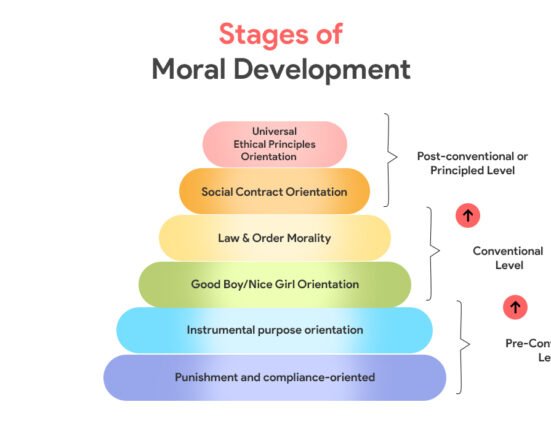What Is MBTI, And Why It May Not Be The Best Judge Of Who You Are?
On social media platforms like Twitter or Instagram, you often come across profiles with a set of four letters – ‘INFJ’, ‘ESTP’, ‘INTJ’ and more – in their bios. Or, you might have heard some introduce themselves by saying, “Oh, I’m an INFP. But what do these mysterious letters mean, and why do people use them to describe themselves? You might dismiss them as some new acronym that GenZ has made up, but it is a lot more significant than that.
Take the test here: 16 Personality test
There are 16 such combinations of four letters, which indicate the personality type of a person. You can find out your personality type by taking the ‘16 Personality Test’, officially known as the Myers-Briggs Type Indicator (MBTI). This psychological testing instrument has been around for more than 75 years and consists of approximately 95 questions.
Read More _ know about the theories of personality disorder
What is MBTI?
MBTI is a psychological testing tool used to assess the personality type of a person. This personality test was devised in the 1940s by Isabel Briggs Myers and her mother Katharine Cook Briggs. It is based on the theory of personality types put forth by psychologist Carl Jung. The mother-daughter duo designed the test to make Carl Jung’s personality typology accessible and understandable to the layperson so that it could be utilised for practical purposes. The MBTI assessment aims to help people gain a deeper understanding of themselves, and identify how they process information, make decisions, and perceive the world.
MBTI is a self-report questionnaire. It helps people better understand their personalities. There are 16 personality types in MBTI. It uses four scales, or dichotomies, to describe a person. The qualities at the two poles of each scale are termed as ‘preferences’. The final personality code of a person represents one of the two preferences, with which they align the most. The 4 preference pairs are listed below, with descriptions from the official MBTI website:
Introversion (I) or Extroversion (E)
This scale indicates the opposite ways in which people direct and receive energy. The result of this scale answers the question – “Do you prefer to focus on the outer world or your inner world?” Extroverts generally tend to be outgoing and action-oriented and source their energy from social interactions. They thrive in group activities. On the other hand, introverts are known to be more reserved and thought-oriented. They are comfortable being alone and prefer to engage in reflecting on thoughts and ideas within their heads.
Feeling vulnerable as an introvert? these books might help you
“Quiet: The Power of Introverts in a World That Can’t Stop Talking” by Susan Cain
“The Introverted Leader: Building on Your Quiet Strength” by Jennifer B. Kahnweiler
Sensing (S) or Intuition (N)
This scale indicates the opposing ways in which people take in information. The result answers the question – “Do you prefer to look at specific facts and details or do you focus on the big picture?” Sensors tend to depend on their sensory experience and are reality-based, whereas intuitors are more likely to rely on their instincts and inner feelings about the world.
Thinking (T) or Feeling (F)
This scale indicates the opposite methods of decision-making people undertake and how they reach conclusions. The primary question it answers is – “Do you prefer to take an objective approach to decision-making or an empathetic one?” Thinkers tend to base their decisions on logic and objective information, while feelers emphasise emotional values while making decisions.
Judging (J) or Perceiving (P)
This scale indicates the opposite ways of approaching the external world. The result answers the question – “Do you prefer to seek closure or stay open to new information?” People who are judging tend to be rigid in their views and prefer structured environments. Those who are perceiving tend to be flexible and open-minded.
These scales are not absolutes and represent spectrums. This implies that a person may not fall into one of the two categories on each scale, but they exhibit behaviours closer to one than the other. Therefore, a person may not be introverted in all circumstances, and might even act extroverted in front of their closest friends. But, since they are introverted in more scenarios than they are extroverted in, they will be categorised as an introvert. No personality type in MBTI is superior. It is merely a representation of a person’s likes, dislikes, strengths, weaknesses, motivations, and patterns of behaviour.
Book Recommended: “Daring Greatly: How the Courage to Be Vulnerable Transforms the Way We Live, Love, Parent, and Lead” by Brené Brown
Common Uses of MBTI:
As we saw, MBTI is popular amongst social media users to describe themselves. You might even come across the four-letter codes on people’s dating app profiles. However, there are more practical uses of the personality test. MBTI has been used by several renowned businesses worldwide to assess their employees for hiring and to determine their strengths, compatibility with their colleagues, and leadership qualities. It has also been used by premarital counsellors to assess the romantic compatibility of couples. Career counsellors are also known to use MBTI to recommend the career paths one should explore.
Criticisms of MBTI:
The validity of MBTI has been repeatedly questioned by experts. It has been criticised for the following reasons:
- Experts have highlighted that humans are multidimensional. Humans cannot be neatly categorised into 16 boxes. MBTI fails to capture the degree of personality traits a person might possess.
- MBTI is inconsistent. There is low test-retest reliability, and people’s personality codes change over time.
- MBTI does not take into account some important facets of personality that have negative connotations, such as neuroticism (emotional instability) or low conscientiousness. Thus, it is an inadequate tool.
How to Use the MBTI Test?
If you want to discover your personality using MBTI, you can take the test on the official MBTI website, or schedule an appointment with an MBTI-certified practitioner to administer the test for you. The test takes around 45 minutes to complete. You need to be wary of online websites that claim to administer the MBTI test. They usually consist of false questions and result in an inaccurate and oversimplified assessment of your personality.
Read more: What does your Music taste tell about your personality?
Also, you must keep in mind that the MBTI test should not be taken as the norm for your behaviour. The popularity of the MBTI test has led to its widespread use, as highlighted earlier. But, uses of MBTI such as determining career-related capabilities or marital compatibility are not backed by research. Do not let your result dictate your existence. The MBTI test is best used for self-reflection and awareness and is not a definitive measure of your personality.













Leave feedback about this